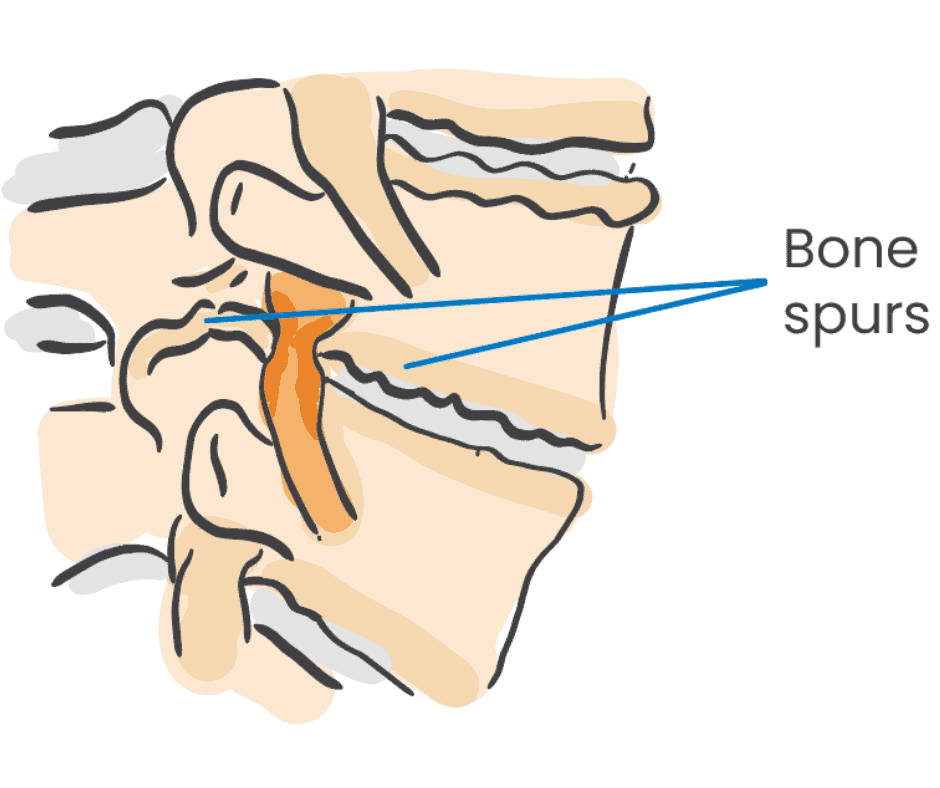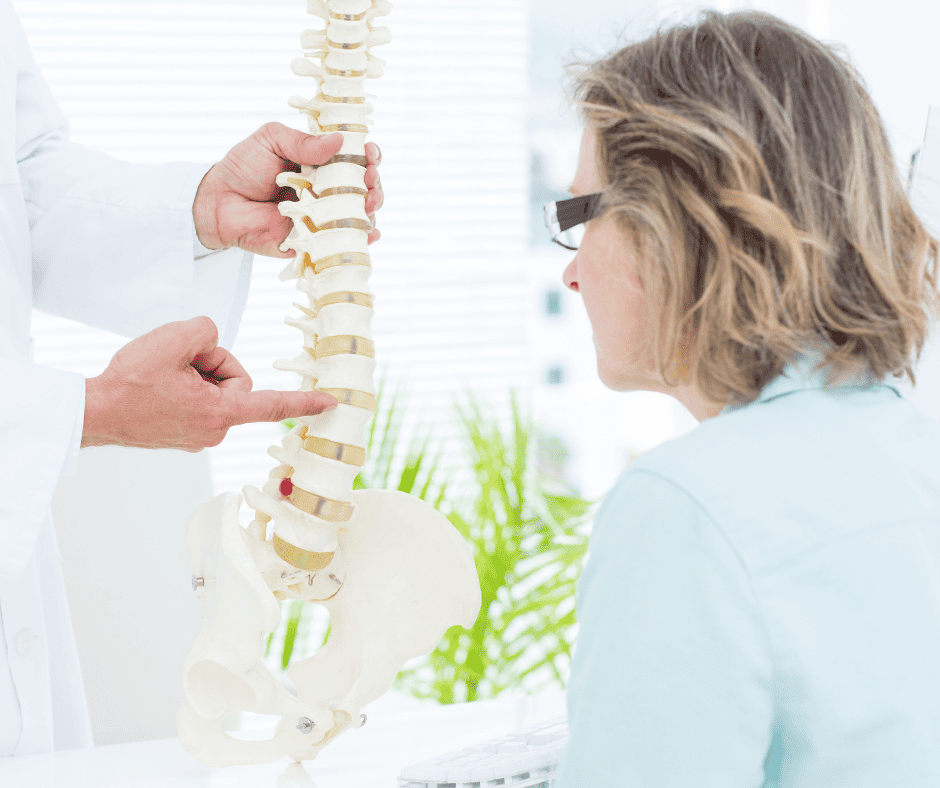What Are Bone Spurs?
- What Are Risk Factors for Bone Spurs?
- What Are Common Symptoms of Bone Spurs?
- How Are Bone Spurs Diagnosed?
- What Are Treatment Options for Bone Spurs?
- Who Should Consider Surgery?
As a result of aging, injury or poor posture the cartilage between the vertebrae may begin to deteriorate causing the bones of the spinal column to rub together. This friction may form bone spurs.
In some instances, these bone spurs press on the nerve roots as they leave the spinal canal causing pain. Bone spurs are very common as we get older and most of the time they do not cause any problem.

What Are Risk Factors for Bone Spurs?
- Poor posture and ergonomics
- Heredity
- Nutrition
- Trauma – sports related, motor vehicle accident
Medical conditions – osteoarthritis, spinal stenosis
What Are Common Symptoms of Bone Spurs?
Symptoms of Bone Spurs Include:
- Some people live with bone spurs and are never aware they have them, they do not cause any problem
- Pain in one or both arms or legs, as the Spurs, pinch the nerves leaving the spinal canal
- Numbness, tingling or weakness in the arms or legs
- Loss of coordination or difficulty walking
Loss of bowel or bladder control (very rare cases) (seek immediate medical attention)
How Are Bone Spurs Diagnosed?
After an examination and a review of your past medical history your spine surgeon or his physician assistant will order x-rays to determine the cause of your pain. An MRI of your spine may also be ordered to determine if there is nerve compression and determine more accurately which level within your spinal column is affected. In some cases your spine surgeon may order a nerve study called an electromyography (EMG). This tests the specific nerves to determine which nerves are being affected. After diagnostic testing is completed your physician will determine your treatment plan.
What Are Treatment Options for Bone Spurs?
There are non-surgical options available. Medications may be prescribed for pain and an anti-inflammatory are usually tried first to relieve the pain and inflammation caused by the bone spurs. Physical therapy is also used to help with some of the symptoms associated with the bone spurs. Occasionally steroids are injected around the nerves in the spinal column (epidural steroid injections – ESI) easing the pain and reducing the inflammation.
The steroid injections are done by Orlando Orthopaedic Center’s Pain Management Physicians. This is done in an outpatient surgical suite under fluoroscopy (specialized x-ray machine), which allows the steroid medication to be injected around the spinal nerves that are being affected. This may relieve the pain completely. If the pain is not relieved surgery may be indicated.
When non-surgical treatment fails patients might be a candidate for a laminectomy. This procedure allows the spine surgeon to remove the bone spurs and relive the compression on the spinal nerves. If a large section of bone needs to be removed a spinal fusion may also be indicated.
The spine surgeon will make the decision on which type of surgery will benefit the patient most.
Who Should Consider Surgery?
Surgery should be considered for individuals who have failed conservative treatment with medications and injections, or those with symptoms that are so severe that they are starting to lose significant function and are at risk for permanent nerve damage.
All risks and benefits of spine surgery should be considered before making a decision. The spine surgeon will discuss all available options and treatments. Find out more about spine surgery at Orlando Orthopaedic Center, click here to request an appointment or if you’ve already had an MRI and would like a free MRI review you can click here.
Surgery should be considered for individuals who have failed conservative treatment with medications and injections, or those with symptoms that are so severe that they are starting to lose significant function and are at risk for permanent nerve damage. All risks and benefits of spine surgery should be considered before making a decision. The spine surgeon will discuss all available options and treatments.
Find out more about spine surgery at Orlando Orthopaedic Center, click here to request an appointment or if you’ve already had an MRI and would like a free MRI review you can click here.



